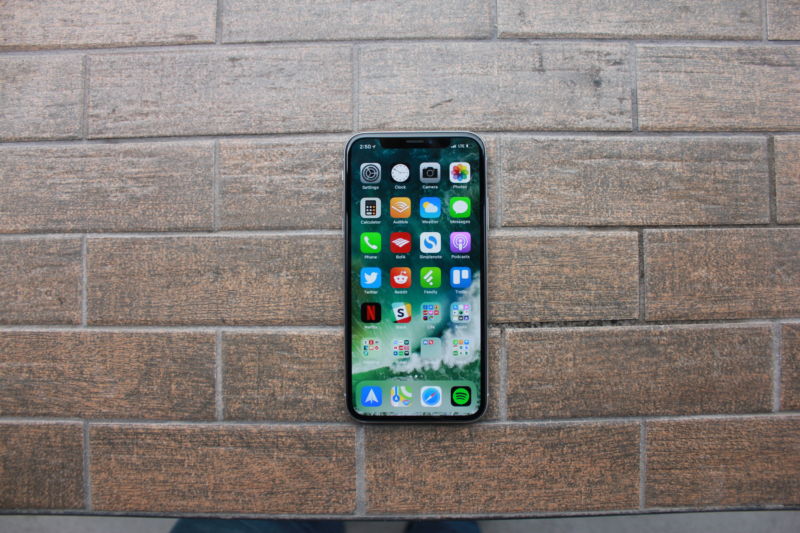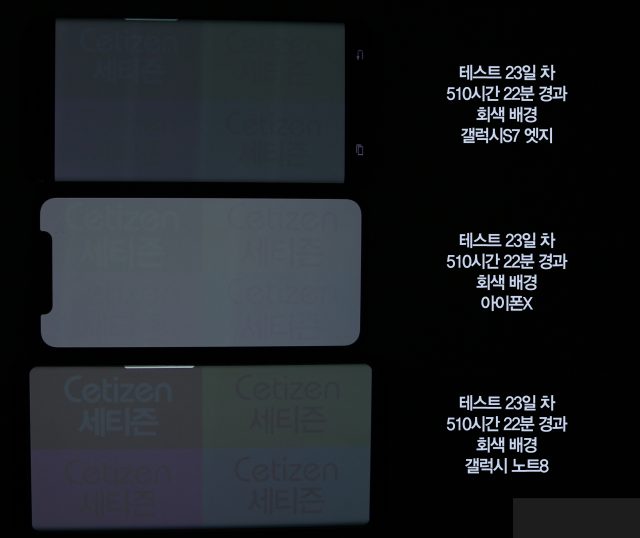
Korean tech site and phone marketplace Cetizen tested OLED displays on the iPhone X, the Samsung Galaxy Note 8, and the Samsung Galaxy S7 Edge for 510 hours to measure burn-in as part of its ongoing iPhone X review. In all three cases, maintaining a static image for far longer than a normal use case was necessary to produce noticeable burn-in. The iPhone X took longer to exhibit distracting burn-in than the other two phones.
The site left the phone screens displaying a static image at maximum brightness for the test's entire duration. The iPhone X first showed signs of burn-in at 17 hours, but even then the image retention was not bad enough to be noticeable in normal use. The Galaxy Note 8 took longer to exhibit retention, but by 62 hours it was more significant than what was seen on the iPhone X, such that a general user could identify the burned-in spots on the Note 8 at that time but not on the iPhone X.
By the end of the 510-hour test, all three phones had very noticeable image retention that could potentially be permanent. Cetizen did not report trying any methods of clearing the image up. In OLED TVs, retention can occur after several hours—especially with things like network logos on broadcast TV or persistent UI elements in video games—but it is usually easily reversible with the help of image retention remedies included in the TV's software. But the OLED panels in phones are made very differently from those in TVs, so it's unclear how much the retention is reversible in phones. It could vary from device to device.

All told, the Samsung Galaxy S7 Edge performed almost, but not quite, as well as the iPhone X, and the Note 8 exhibited the worst retention. When we reviewed the iPhone X, Apple told us that it had implemented certain anti-retention measures in addition to its usual fine-tuning of the iPhone display. But the company didn't disclose what those measures were. Whatever they were, this comparison suggests they were at least somewhat effective.
None of these three phones performed poorly enough in this test that owners should be worried. It seems that with high-quality panels made by Samsung (the iPhone X uses a Samsung-manufactured panel), OLED display technology has overcome some of its most concerning problems. LG's phone panels might still be a different story—for now.
reader comments
128